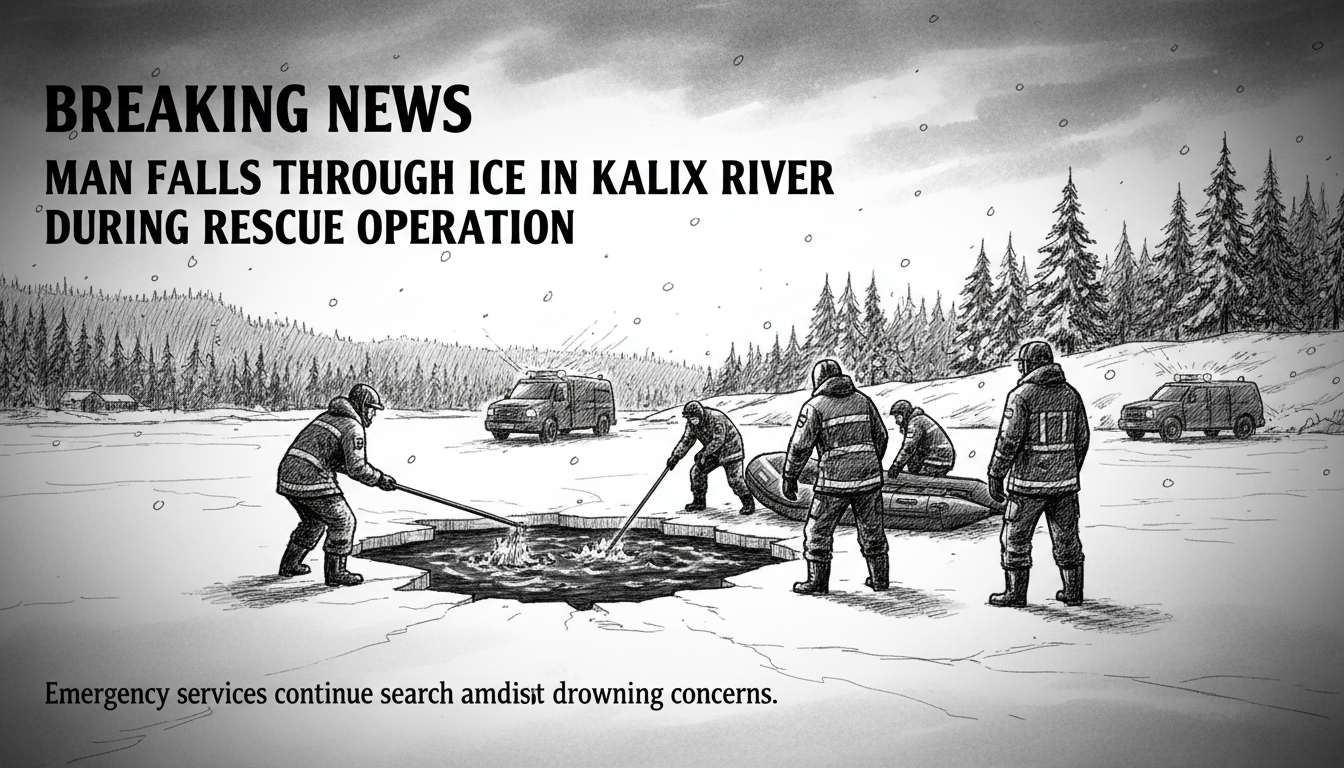Emergency services continue their search for a man who fell through the ice on the Kalix River in northern Sweden. The individual went missing during lunchtime on Tuesday, prompting a major rescue operation in the area.
Rescue teams and ambulance services remain at the scene as of 4 PM local time. Authorities initially feared a possible drowning incident when launching the search effort. The man's current condition remains unknown as rescue operations continue.
This incident highlights the ongoing dangers of winter ice conditions across Nordic regions. Despite recent cold temperatures, ice thickness can vary dramatically, creating hidden hazards for those venturing onto frozen waterways. The Kalix River, flowing through Norrbotten County, presents particular challenges due to shifting currents and variable freezing patterns.
Swedish emergency response protocols typically mobilize multiple agencies for ice rescue situations. Local rescue services coordinate with ambulance teams and sometimes helicopter support when dealing with potential drowning cases. These operations become increasingly urgent as hypothermia can set in quickly in frigid northern waters.
Northern Sweden experiences numerous ice-related incidents each winter season. Local authorities consistently warn residents about checking ice thickness before venturing onto frozen lakes and rivers. The standard safety recommendation requires at least 10 centimeters of clear ice for walking, and significantly more for vehicles or groups.
This latest incident serves as a sobering reminder for both locals and visitors to exercise extreme caution around frozen waterways. Many municipalities provide updated ice condition reports throughout the winter months, yet unexpected weak spots can develop due to underwater currents, snow insulation, or temperature fluctuations.
The rescue operation continues as daylight fades in the northern region. Emergency teams face the dual challenge of locating the individual while ensuring responder safety on potentially unstable ice conditions. The coming hours will prove critical for the mission's outcome.
Local communities often rely on such emergency response systems in remote northern areas where harsh winter conditions prevail for much of the year. This incident demonstrates both the risks inherent in Nordic winter activities and the comprehensive emergency response capabilities maintained throughout the region.

